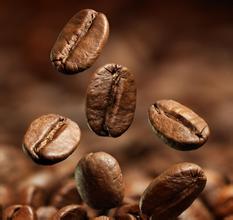Can Arabica Coffee beans be flushed by hand?-- an introduction to the planting Environment by describing the characteristics of producing area, Price and Flavor
Are Arabica coffee beans good at flushing?
Arabica coffee accounts for 70% and 80% of all coffee production, and its excellent flavor and aroma make it the only native species of coffee.
A coffee that can be drunk directly. However, its resistance to dryness, frost, diseases and insect pests is too low, especially the natural enemy of coffee-leaf rust, so all producing countries are committed to variety improvement.
It turned out that all the commercial coffee in the world was small-grain coffee, but it was only at the end of the 19th century that growers began to look for other disease-resistant varieties because of the collapse of a large number of coffee farms caused by leaf rust.
Small-grain coffee is still the most important coffee variety, accounting for about 3% of the world's total coffee production. It is mainly grown in Latin American countries, but also partly in Indonesia and the Pacific islands. The geographical and climatic conditions of Brazil, the largest coffee producer in the world, are very suitable for the growth of small-grain coffee, and the main coffee varieties planted are also small-grain coffee. Brazil's coffee production accounts for more than 1% of the world's total output.
The fruit of small-grain coffee is smaller than that of medium-grain coffee and large-grain coffee. The berries are oval and generally have two seeds, the so-called "coffee beans".
1, the market share is relatively large, there are many varieties of coffee, first of all, the two most common varieties are: Arabica and Robusta! The coffee beans on the market, unless there is coffee specially grown by Robusta, no matter what name you encounter, such as Yega Sheffield, Mantenin, Columbia, etc., all belong to the subline or native varieties under the Arabica variety.
2. Expensive Arabica is generally more expensive than other coffee beans
3. Under different planting conditions, it is best to plant in high altitude areas, with lower temperature and lower yield. It has a stronger taste, elegant mellow and acidity; about 1% caffeine (by weight) is expensive: other coffee beans are usually grown at lower elevations and higher temperatures, resulting in higher yields. Lighter taste, about 2% caffeine, lower price
4. Low yield Arabica coffee grows best. This kind of coffee has a much more refined flavor than other coffee. The caffeine content in this kind of coffee only accounts for 1% of the total weight of coffee.
Because among the many beans in Espresso, high-quality robusta coffee beans can make Espresso show its due personality, increase the taste of coffee, make it strong, and at the same time increase the bitterness, make the golden oil of coffee more attractive, and if fine taste, you can also taste chocolate or cocoa, which Arabica can not show, but also in line with European preferences. Because of the strong flavor and high caffeine content of Robusta coffee beans, it has become an essential ingredient for making a successful cup of iced coffee.

Important Notice :
前街咖啡 FrontStreet Coffee has moved to new addredd:
FrontStreet Coffee Address: 315,Donghua East Road,GuangZhou
Tel:020 38364473
- Prev

When can the roasted coffee beans be drunk and stored for how many days? the latest shelf life.
When can you drink tin cans of roasted coffee beans can keep the aroma of coffee for a long time. Plastic bags are fine, but they store less than tin cans. In foreign countries, coffee beans are sometimes sold in tin cans or plastic bags. Vacuum packaging is more conducive to the storage of coffee, making the original flavor more lasting. Once you open an oil-proof or tin foil-packed coffee bag, immediately put the coffee beans or
- Next

How many coffee beans can be produced by a coffee tree? how many iron pickup coffee trees can be planted in an acre of land?
How many coffee trees can be planted on an acre of land 1. The planting conditions of coffee trees the ideal planting conditions for coffee trees are: a warm climate with a temperature between 15 ℃ and 25 mm, and the annual rainfall must reach 1500 MFT 2000 mm. At the same time, the rainfall time should be in line with the flowering cycle of coffee trees. Of course, in addition to the seasonal rainfall, there should be fertile soil and good drainage.
Related
- Beginners will see the "Coffee pull flower" guide!
- What is the difference between ice blog purified milk and ordinary milk coffee?
- Why is the Philippines the largest producer of crops in Liberia?
- For coffee extraction, should the fine powder be retained?
- How does extracted espresso fill pressed powder? How much strength does it take to press the powder?
- How to make jasmine cold extract coffee? Is the jasmine + latte good?
- Will this little toy really make the coffee taste better? How does Lily Drip affect coffee extraction?
- Will the action of slapping the filter cup also affect coffee extraction?
- What's the difference between powder-to-water ratio and powder-to-liquid ratio?
- What is the Ethiopian local species? What does it have to do with Heirloom native species?

